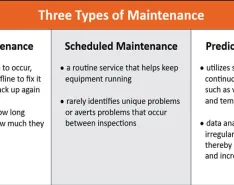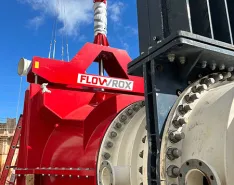Successful large valve installations require careful planning.
Valves
Valves regulate and control flow and pressure in pumping systems. They also play an important role in site safety. Understanding the types of valves and how they work can help end users select the right valves for their application’s use.
This component provides a variety of pump protection benefits.
Learn what situations may call for check valves or pump control valves.
Prioritizing safety, reliability and efficiency with specialized valve technology.
Understanding different types of check valves and their applications.
Reducing friction while maintaining effective sealing is often critical.
Understanding the 68-01 update and exploring arc/shutter valves as an alternative.
The type of valve specified and installed can impact system quality and performance.
How incorporating intelligent valves resulted in greater efficiency.
Skagit Public Utility District installed a power-producing pressure reduction valve to curb electric demand and carbon footprint.
How thermostatic technology can reduce pump stoppages and conserve water.
How gas ballast valves can improve processes and reduce maintenance of vacuum pumps.
A glimpse at the common standards that affect potable water.
A case for water utilities to adopt modern practices and technology.
The flexibility of this equipment offers potential sustainability and efficiency benefits.
The use of carbon graphite enables reliable performance in harsh environments.
An in-depth look at the interactions that take place between a SCADA system and PLC.
The importance of valve packing loading precision.
Avoid costly downtime with predictive maintenance.
An in-depth look at the potential benefits of pinch valves.
It is imperative to choose the right materials when working in caustic environments.






















